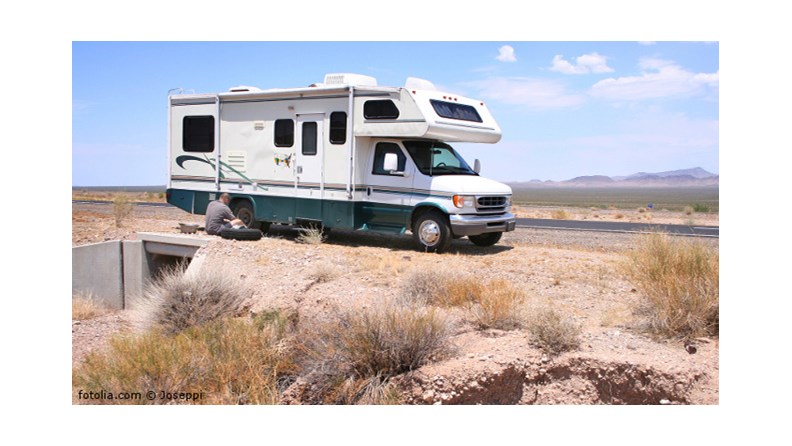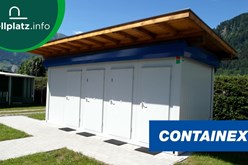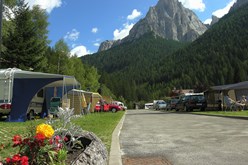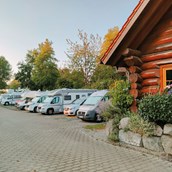For most owners, motorhomes are among the vehicles that are rarely driven. Sure, you drive your car to work every day, but you only take a motorhome out of the garage for one trip. Unfortunately, the sometimes long downtimes can cause technical problems - which also go undetected due to the infrequent driving. For this reason, the motorhome requires - a little - more care than a car that you drive every day.
Check 1: Tires
The tires are perhaps the most dramatic discrepancy compared to normal cars. Because in everyday cars, the driver can follow the rule that the tires are good as long as the tread is sufficient - i.e. 1.6mm for both summer and winter tires. Before a car tire has reached a dangerous age limit, it is usually worn out and needs to be replaced anyway.
It's different with a motorhome. Due to the comparatively low annual mileage, it is much more likely that the age limit will be reached before the tread is worn out - they still have to be replaced for safety reasons.
To find out how old the tires are, all you need to do is look at the tire sidewalls. There you will find a four-digit number, the so-called DOT number. To demonstrate this with a practical example. The DOT number is 3315
- 33 represents the week of manufacture
- 15 for the year of manufacture
The tire was manufactured in mid-August 2015 and is therefore still fully suitable for travel, provided there is no visible damage. The problem is that there are no legal rules for a maximum age - the ADAC therefore recommends replacing after a maximum of six years.
And to prevent so-called “flat feet”, you should also increase the air pressure by 0.5 bar above the motorhome manufacturer's specifications before storing and extend all supports so that the tires are relieved.
Important: The spare wheel also belongs to the motorhome
Check 2: Oil
Oil is also one of the “parts” of a vehicle that need to be replaced either due to wear or aging - as with tires, the latter is more likely to be the rule for motorhomes. Manufacturers usually prescribe an oil change every year or every 15-20,000 kilometers.
Importantly, this is not an either/or option - whichever comes first, the oil should be changed. If you have it replaced every year before the motorhome season, you don't have to expect any problems - conversely, oil that is too old can cause a lot of trouble because it no longer lubricates properly and can irreparably damage a young engine.
To prevent this, it is also important to check the oil level - before every single trip or, on longer trips, at every refueling stop. In addition:
- Warm up the engine for at least ten kilometers
- Park the motorhome on a flat surface and unlock the hood
- Pull out the dipstick (yellow or red handle) and wipe with a paper towel
- Put it back in, wait a moment and pull it out again
- If the oil film is between “Min” and “Max”, everything is fine and the trip can begin
However, if there is too little oil in it, it needs to be refilled - in 0.1 liter increments. Each step must be checked again after a few minutes to prevent the engine from overfilling - which would be just as bad as having too little oil.
Check 3: Light and glow
Depending on where your RV trip takes you, you can easily find yourself moving through the countryside dozens of kilometers away from any gas stations or similar automotive bases. However, it is precisely in such situations that, in keeping with Murphy's Law, incandescent lamps in particular tend to give up the ghost, of course in the dark. What may be more or less problem-free with a single taillight bulb becomes a real problem with the low beam bulbs or those in the interior.
Not least under the premise that in Bosnia-Herzegovina and Croatia, among others, there is an obligation to carry spare light bulbs, every motorhome should:
- 2 complete sets of low beam bulbs
- 1 spare fog light bulb
- 2 brake light bulbs
- 2 taillight bulbs
- 1 reversing light bulb
- 1 rear fog light bulb
must be carried - plus one spare bulb per light in the living area of the interior. In addition, the good motorhome pilot should also look at the relevant repair documents beforehand and ideally print out how which bulb needs to be changed - nothing is more frustrating than literally poking around in the dark on the side of the road at night with the light of a flashlight on the inside of a headlight.
Check 4: Tools & roadside assistance
Regardless of whether you are on a parking space in France or in the event of a breakdown on the Brenner Pass, you are lost in a motorhome without tools. The completeness should therefore be checked before the start of the season and supplemented if necessary. And, very important, the tool should be put away again after use. What you should always have with you:
- Multitool (“Leatherman”) contains pliers, side cutters, knife, file, etc.
- Matching wheel wrench, jack, wheel blocks
- Heavy metalworking hammer (including to get rid of rusty wheels)
- A can of WD-40 (lubricates, dissolves and displaces water)
- LED flashlight with stand
- Adjustable open-end wrench (“English” or “French”)
- Set of screwdrivers
- Small ratchet box
Equipped like this, neither flat tires nor demolished headlights can cause any problems. However, there are of course still things that make life easier, and not just in the event of a breakdown, such as:
- A roll of fabric adhesive tape (“duct tape”)
- rubber gloves
- Glow sticks (last forever and can be used as a warning device in the event of a breakdown)
- Two 1.5 liter disposable bottles full of water (for refilling radiators, washer fluid, etc.)
- 5 kitchen towels (as a knee pad, for cleaning hands, etc.)
You should pack all of these parts into a small toolbox, which are available in hardware stores for a low double-digit sum - and store them in the motorhome in such a way that you can still access them even when your holiday luggage is full.
Check 5: Gas
Heating, cooling and cooking in a motorhome works with gas - and subjecting the cylinder to a quick inspection is also part of the travel preparations before every trip. After ten years, the bottles have to be pressure tested again - this isn't exactly cheap, which is why the more sensible alternative is to replace the bottle with a new one beforehand.
The cheapest options here are usually hardware stores, where bottles and filling are often several percentage points cheaper than at a mobile home base. In principle, it doesn't matter whether you rely on the red rental bottles or their gray painted cousins that you buy. However, when it comes to material, you should make sure that the bottles are made of steel, not aluminum - some campsites do not offer the latter in exchange.
And what is also included with the gas bottles is an adapter - the connection threads on German bottles do not necessarily fit the filling systems abroad. If you want to be on the safe side, get the appropriate adapters before you start your journey before you get stuck in the middle of nowhere with an unfillable, empty gas bottle.
Image source: fotolia.com © Joseppi





)





.png)